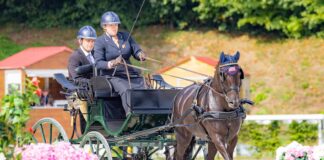Learn more about combined driving in part one of this two-part series. This exciting sport is more accessible than you think, and it just might be the most fun you can have on wheels.
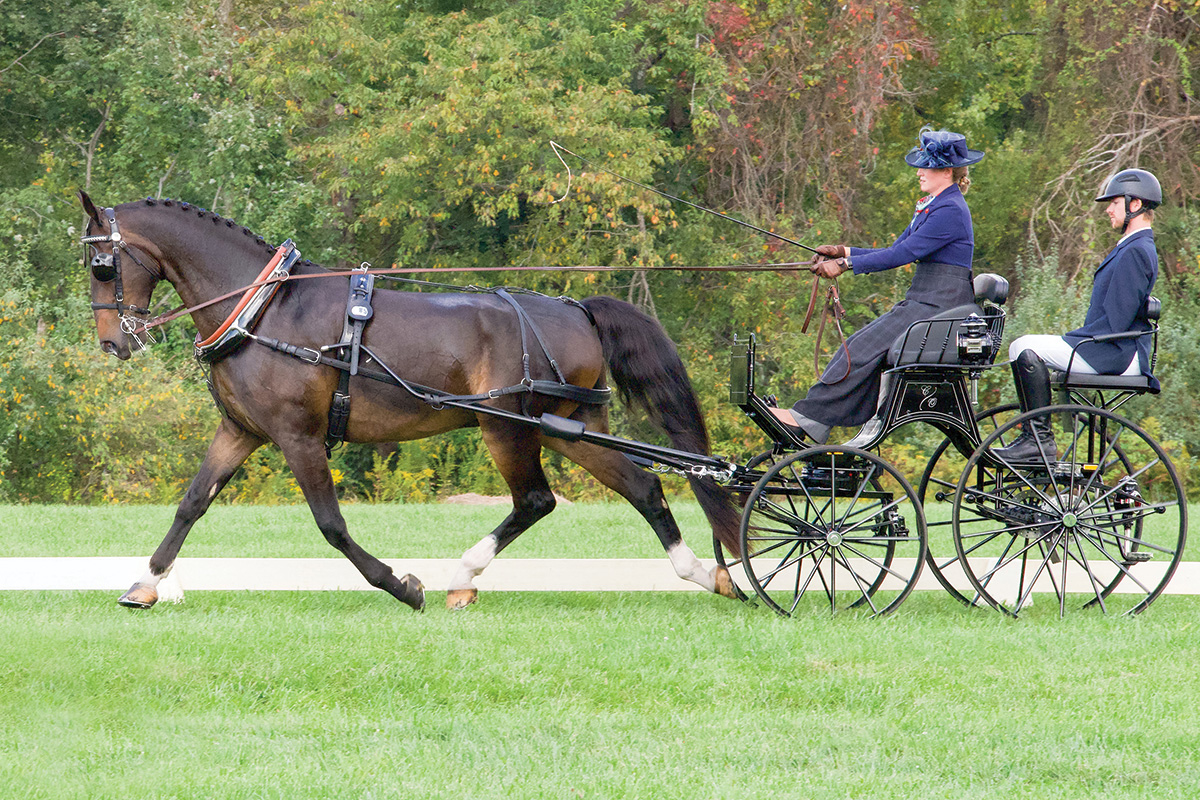
The driver and assistants on the carriage have their hands full guiding the horses and overseeing their welfare, planning the route, checking time elapsed, and keeping the cart from getting caught up or overturned. This is combined driving at the highest, heart-pounding international level.
Why Try Combined Driving?
As daunting as advanced-level combined driving seems, the sport is actually attainable for most equestrians. The driving community is very welcoming to newcomers who want to learn. Experienced drivers are quick to offer advice and help others find education, horses and equipment.
“What drew me to driving as a junior was how much the other drivers wanted to help me learn—that is the driving community,” says Carrie Ostrowski-Place of Lexington, Ky., an international competitor and trainer who guided her KWPN gelding Gellerduht to the 2022 United States Equestrian Federation (USEF) Advanced Single Horse-of-the-Year honors. “I’ve had direct competitors offer me equipment when things have gone wrong, [even] when it wasn’t in their interest to do so. They want to help anyone grow!”
Sara Dunham, an amateur-owner combined driver from Cynthiana, Ky., has competed in the sport for over 20 years and extolls the benefits she’s experienced.
“Combined driving is the most fun I’ve ever had with a horse, early on and to this day,” she says. “I’ve never enjoyed riding a cross-country course, but even as an older lady, I can drive marathon and be as competitive as the younger athletes. You have to have a navigator with you, so grab your best horse buddy or spouse for conditioning drives and competitions. Then you both have lots of fun!”
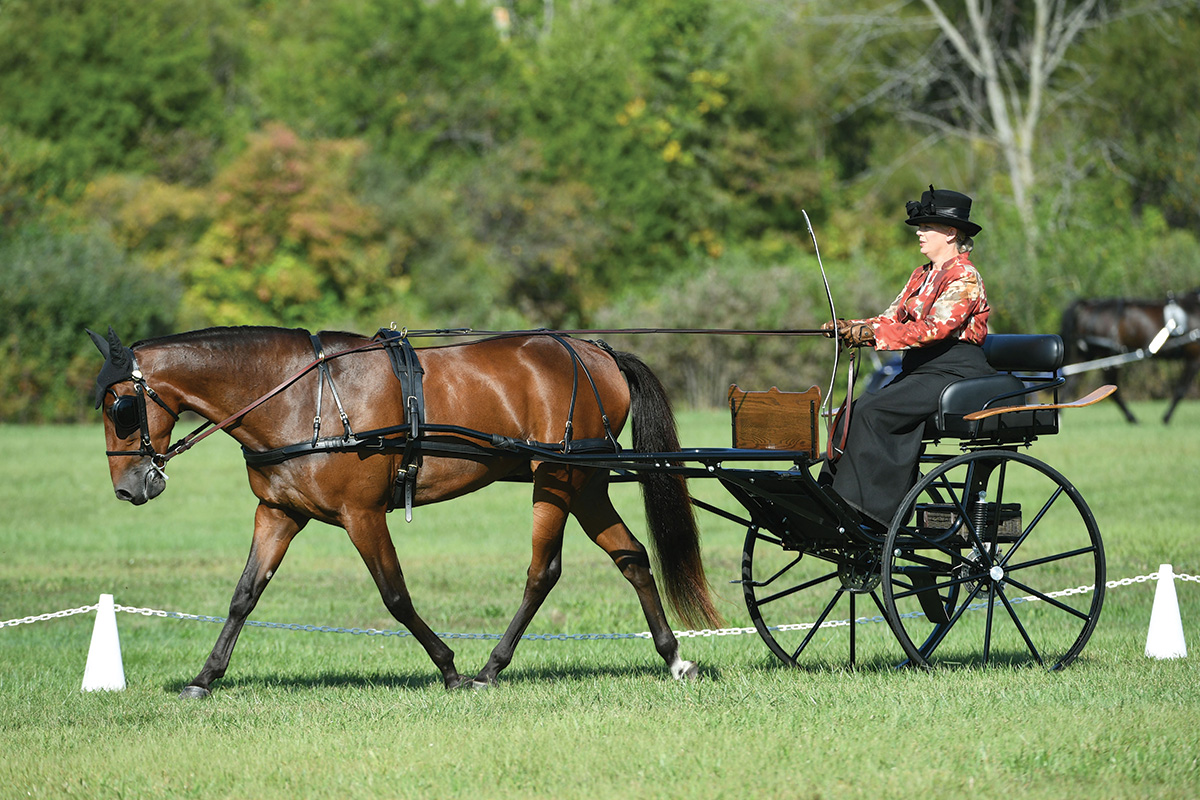
How Combined Driving Works
Rules for modern-day combined driving were developed in Great Britain by Queen Elizabeth II’s husband, Prince Philip, in 1970, the same year that the Fédération Equestre Internationale (FEI) added it to their roster.
Often explained as a driven triathlon and compared to the sport of eventing, combined driving comprises three phases: driven dressage, a test pattern performed with formal presentation; marathon, which is comparable to eventing cross-country, but obstacles replace jumps; and cones, the equivalent of eventing’s show jumping phase, but drivers try to guide their equines and vehicles through pairs of cones without knocking balls off the top of them, with time factored in.
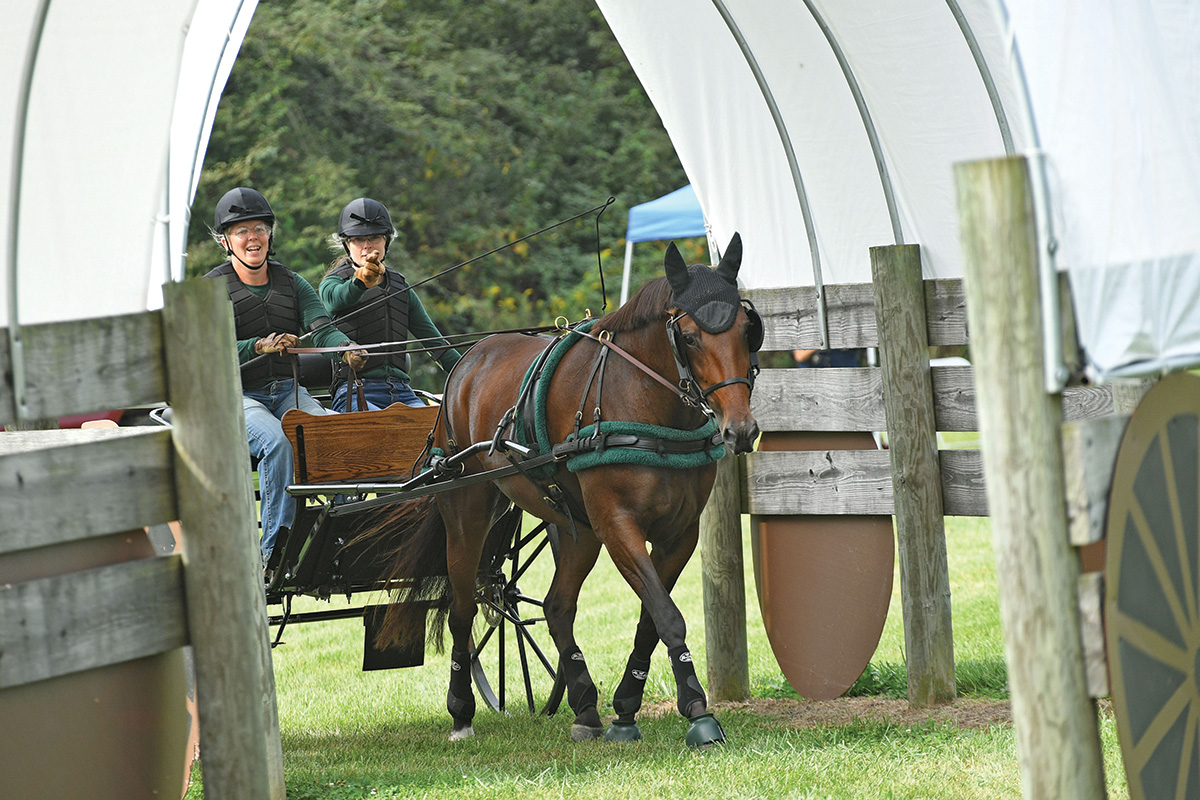
A logical, move-up-the-levels system of training and competition eases you into the sport. The USEF rule book states a clear progression of competition, offering Beginner through Advanced levels. This provides a way to learn and advance at your own pace.
USEF rules also include para-equestrians in combined driving. The American Driving Society (ADS) rules are similarly designed to encourage participation at all levels.
Formats, Vehicles, Levels and Equines You’ll See
There are three common formats of combined driving, two of which are specifically designed for competitors to gain experience without doing a full combined driving event. One is a combined test (or CT; similar to a CT in eventing, there are only two phases, usually dressage and cones).
The second is an HDT or “short format” driving event with three phases, but they are shorter and less formal. Finally, there is the full combined driving event (CDE).
Combined driving offers classes within each level for horses or ponies being driven single, two together as a pair, or a team of four (also called a “four-in-hand”).
A variety of two-wheeled carts and four-wheeled carriages are allowed, depending on the size and number of horses driven. However, specially designed, sturdy marathon carriages are popular.
To allow more drivers to compete in the Beginner through Intermediate levels, the pony class may be subdivided into large pony (120-149 centimeters tall), small pony (99-119 centimeters), and very small equines (VSE; under 99 centimeters).
Watching a combined driving event, you’ll see a wide variety of equines used. These include warmbloods, off-track Standardbreds, Morgans, Saddlebreds, Quarter Horses, draft crosses, ponies, Miniature Horses, and many more. Unlike ridden eventing, even donkeys and mules are eligible.
“Driving is very breed inclusive,” says Ostrowski-Place. “While there are ‘vogue’ breeds, you will see just about anything in the ring, and no one is thinking twice about it.”
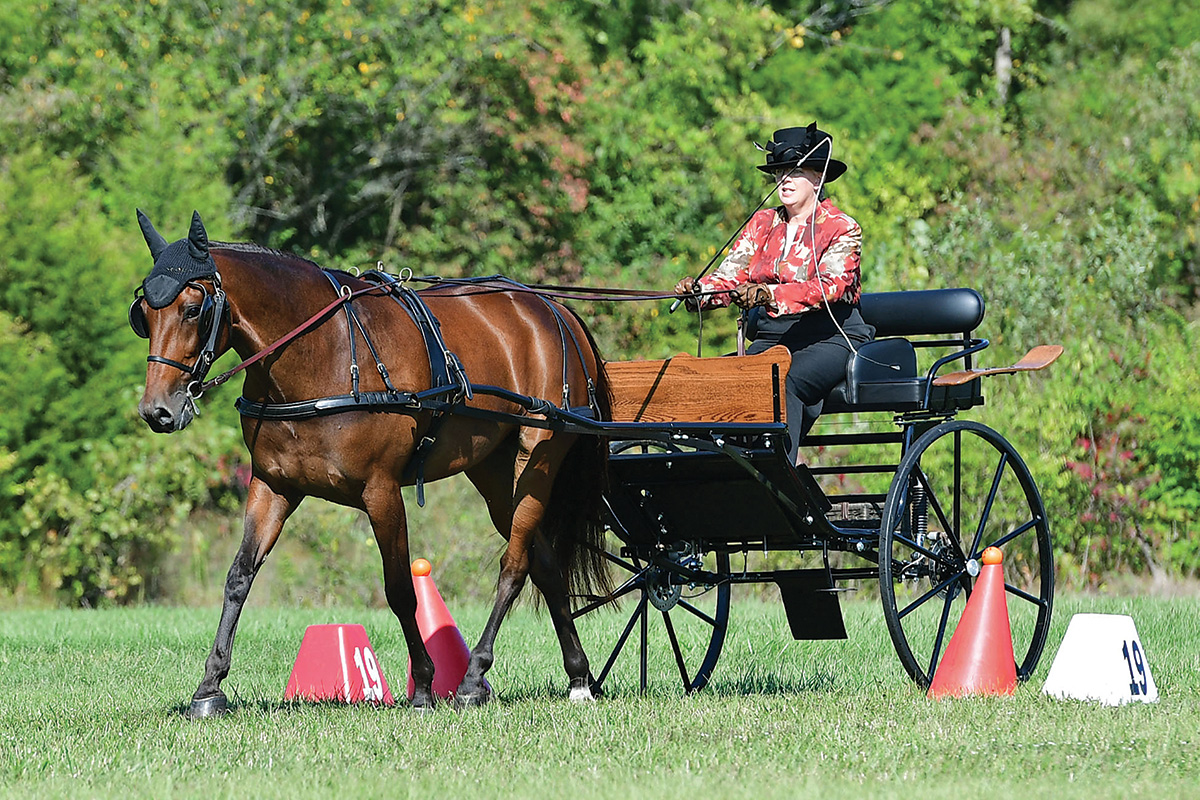
Meet the TrainerProfessional equestrian Carrie Ostrowski-Place’s path to international combined 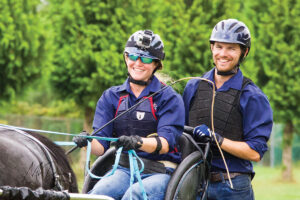 driving started when she began riding lessons at age 10 in her home state of South Dakota. Six months into riding, her instructor had her drive a Shetland Pony, which sparked her passion for all things driving. A family member gifted her an antique carriage; that, plus a Morgan horse she had as she grew up helped her delve into carriage pleasure driving. Later she had the chance to shadow driver Marc Johnson, and then worked as an assistant for FEI driver Sterling Graburn. She has also learned from many other big names in the sport through clinics and the USEF Developing Athlete Program. The final inspiration for competing internationally was watching the 2010 Alltech FEI World Equestrian Games held in Lexington, Ky. In 2013, she launched her O-ski Equine training business. In addition to teaching humans and horses, she is an American Driving Society (ADS) licensed “r” Combined Driving Technical Delegate and serves on the USEF Driving Sport Committee, as well as the ADS Board of Directors and the ADS Combined Driving Committee. |
Online Resources◆ American Driving Society: Go to “Competitions” tab to find combined driving information and the ADS rule book; select the “Education” tab, then “New to Driving,” to find helpful articles and videos. To find area driving clubs, go to the “About Us” tab, then select “Regions” and choose an area on the map. ◆ Carriage Association of America (CAA): A list of instructors can be found on this site by adding “/carriage-driving-instructors/” after their web address; also note the list of clubs under the “About Us” tab and information about the CAA Driving Proficiency Program. ◆ Fédération Equestre Internationale (FEI) ◆ Facebook Groups: Beginning Carriage Driving; CD-L on Facebook, and CDE & Pleasure Driving Buy, Sell & Learn |
Further Reading
◆ Driving Horse Qualities
◆ How to Get Started Driving Horses
Stay tuned for an article coming soon about how to try out the exciting sport of combined driving.
This article appeared in the May 2023 issue of Horse Illustrated magazine. Click here to subscribe!




